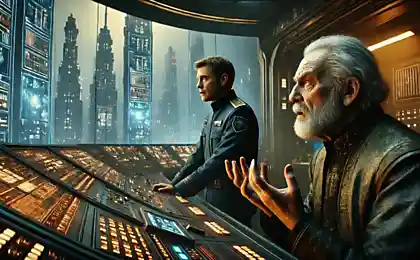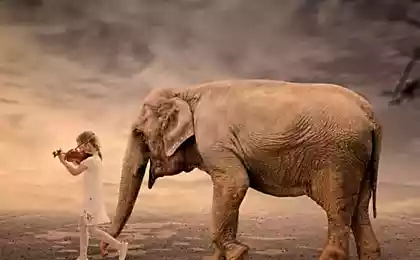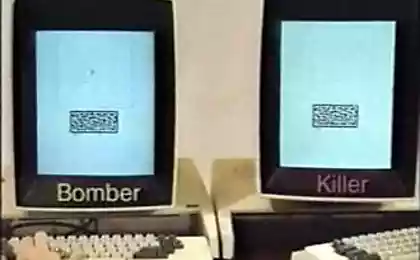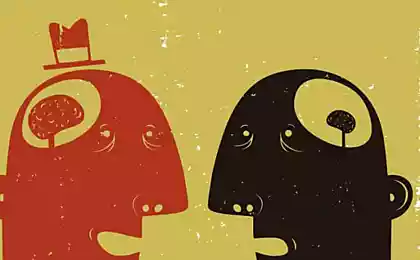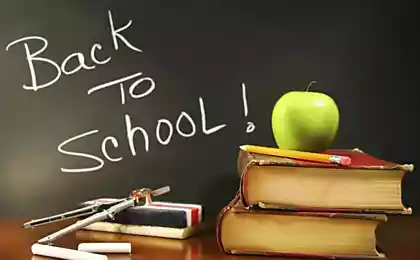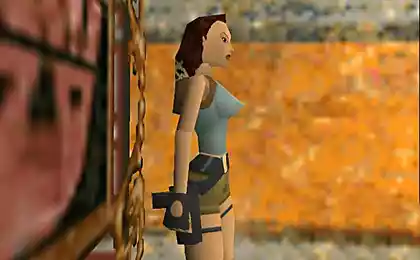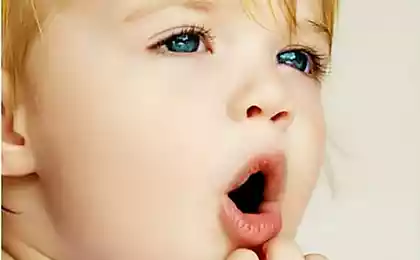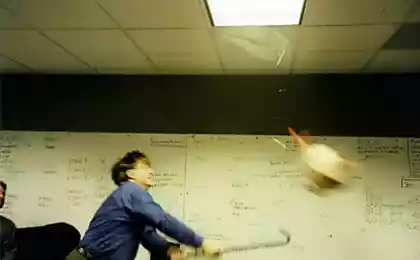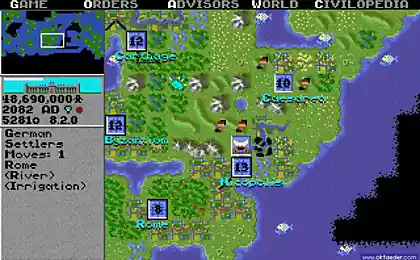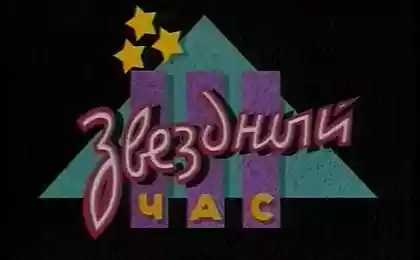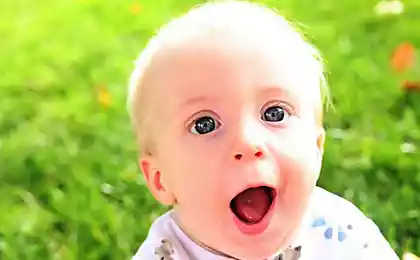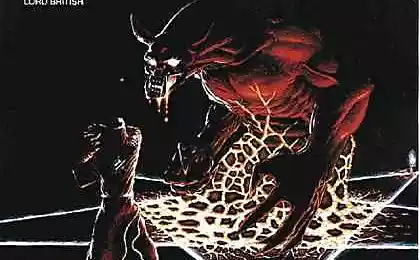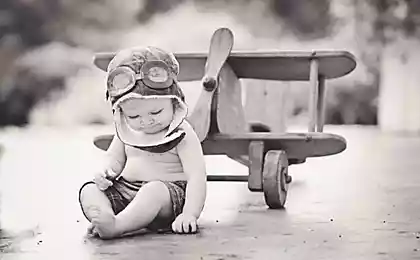579
Exercises for kids to develop thinking techniques, TRIZ
Few people know that beloved by several generations of the puzzle is finding the differences in two similar images is a task that TRIZ teachers recommend the solving with the aim of developing the child's thinking.
There are many other exercises through which children of different ages (from preschool to high school) not just develops the imagination but also lay the Foundation for a system of analytical thinking and perceiving the world.
This article contains some of these exercises. Applying them, you will get excellent practical tool for the education of the child qualities of a creative person from an early age.
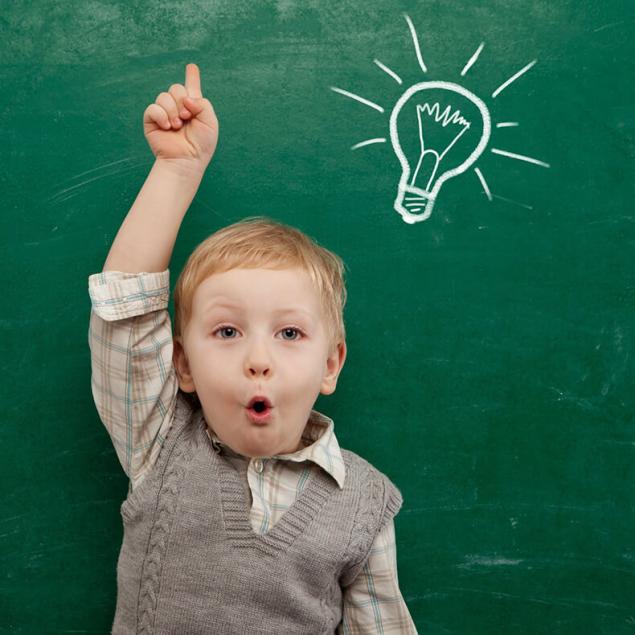
"Yes-No"
Simple and well-known children's game. The teacher thinks of any word (noun – ball, rack, cat, cloud) and offers children to guess who it is by asking clarifying questions. However, he answers only Yes or no, and the children by questions like "is It an animal?" "This subject?", etc. moving to the answer. When they made the first significant progress, the teacher assumes the function of master and only enforces the rules, and the participants themselves make each other new words.
The properties of the object
The essence of the exercise in finding as many properties proposed by the teacher of the subject or object. Let this be the ball. Children sit in a circle and one by one, passing it to each other, referred to by one property. First it's something obvious: round, leather, stitched, football, patterned, with hole for pump, etc.
Will continue to become harder, and the teacher should help children find new features. Such "hidden" properties of objects well coached thinking, helps us better know the purpose and features of application of different things and fosters creativity.
Classes and groups
Classification – typical mental operation used by each person. Almost everything around us is organized and combined in a specific group, starting with the paragraphs in school textbooks and ending with the placing of the goods on the shelves in stores. So understanding the basics of how structured information is a valuable skill, and the exercise of his good coaching.
His conduct, both individually and in a group. For this you will need various items: toys, books, household items. The first stage is the easiest: divide all the available items (pre-mixed) for 2 or more groups based on one main feature (e.g. toys and books). It is important not to directly explain to the child how to structure and lead him to an independent decision.
Next mission: to organize the classes on several characteristics (e.g., share toys to those that are made of wood and those of plastic; and then to select from them relevant to nature – dolls, animals, and not having a machine, the robots, the designers).
In the already obtained classes can have subclasses based on the most obvious features (color, size) and more complex (functional toy machines construction crane, bus, tractor, etc.).
Exclusive feature
This exercise is a more complex version of the previous one. You don't need any items, just normal pictures with their images. Initially, you need to find a way to group drawn objects each differed from others in some obvious characteristics (her child and must find).
Recommend to start with 3 images. Let it be tomato, car and cat. For car exclusive feature is, for example, his belonging to inanimate nature, in contrast to the other two. For tomatoes that you can eat. In the future, the number of images and complexity of patterns on them (the non-obviousness of signs) can be complicated.
Fairy tale collage
A great exercise for memory and the development of creative imagination. You start to tell a fictional tale, which contains all the favorite characters of the child and gradually connected to this process and himself. It helps you to build the storyline and introduces new characters.
During the process of creating such fairy tales do not need to care about the logic and harmony of the composition – the story can develop as you like, as long as it was interesting and was a genuine child participation.
Auction
Exercise in the form of a game. The teacher encourages the children to participate in the auction, the lots for which you have previously selected. He puts a "for sale" first thing, let's say it's a handkerchief.
The task of the children in turn to name one of its application: to wipe the nose, wipe the Apple, to use as a blanket for dolls etc Item goes to the last person who finds a way to use it. Exhibited on the next lot.
"Was-was"
A great exercise that teaches children to see the relationship and find the ways of development of the situation. You can prepare the cards with the right items and objects and you can just ask questions about them. Examples of possible questions:
Is that made of wood? (matches, paper, furniture, fence, handle for hammer, toys...)...
— Why grow wheat? (for the manufacture of flour, bread, pasta, animal feed, for the manufacture of drugs...).
A more complex version of the exercise: the teacher asks the question of what constitutes a subject (e.g., what materials are present in the parts of the car). Children respond: plastic, iron, rubber, fabric. Then understand where do these materials – iron is mined from the earth and processed in factories.
Fantastic animal
A more complex exercise based on the application of the method of focal objects (transferring the properties of one object to another). You need to ask the children to think of an animal that is not found in nature and draw or talk about it. No restrictions – it can be as modular form of several animals and something completely fantastic. After receiving the drawing or the description, should thoroughly work on its history: what does? where he lives? what's eating? You can create not only animals, but also any items.
"Logical train"
It is better to use images with the appropriate images, but you can just call the words (although in this case, visibility suffers and the more difficult the explanation of the principle of the game child). The point is to build a chain of interrelated concepts-"cars". For example, if the first picture depicts a tree, the second "car" can be with a picture book, the third school, the fourth globe, etc.
"Skeleton"
Pre-prepared cards on which are written consonants: GR, KIT, etc. the Task of children is to build using only the vowels of "real" words. Based on our examples, it can be:
G – mountain, mountain, Gar; ZNT – umbrella, Zenith, occupation.
To choose the complexity of the reductions must be based on the age of the child.
Intolerance of family-reality — reason for computer addiction in childrenWhat to do to a child when bored
Deal by methods of TRIZ is better with a group of children, because in this way they will learn from each other and faster to learn. But individual classes are a definite benefit.
Good luck to you in the application of the Theory of inventive problem solving in matters related to training! published
Author: Sergey Krutko
Source: 4brain.ru/blog/%D1%82%D1%80%D0%B8%D0%B7-%D1%83%D0%BF%D1%80%D0%B0%D0%B6%D0%BD%D0%B5%D0%BD%D0%B8%D1%8F-%D0%B2-%D0%BF%D0%B5%D0%B4%D0%B0%D0%B3%D0%BE%D0%B3%D0%B8%D0%BA%D0%B5/
There are many other exercises through which children of different ages (from preschool to high school) not just develops the imagination but also lay the Foundation for a system of analytical thinking and perceiving the world.
This article contains some of these exercises. Applying them, you will get excellent practical tool for the education of the child qualities of a creative person from an early age.

"Yes-No"
Simple and well-known children's game. The teacher thinks of any word (noun – ball, rack, cat, cloud) and offers children to guess who it is by asking clarifying questions. However, he answers only Yes or no, and the children by questions like "is It an animal?" "This subject?", etc. moving to the answer. When they made the first significant progress, the teacher assumes the function of master and only enforces the rules, and the participants themselves make each other new words.
The properties of the object
The essence of the exercise in finding as many properties proposed by the teacher of the subject or object. Let this be the ball. Children sit in a circle and one by one, passing it to each other, referred to by one property. First it's something obvious: round, leather, stitched, football, patterned, with hole for pump, etc.
Will continue to become harder, and the teacher should help children find new features. Such "hidden" properties of objects well coached thinking, helps us better know the purpose and features of application of different things and fosters creativity.
Classes and groups
Classification – typical mental operation used by each person. Almost everything around us is organized and combined in a specific group, starting with the paragraphs in school textbooks and ending with the placing of the goods on the shelves in stores. So understanding the basics of how structured information is a valuable skill, and the exercise of his good coaching.
His conduct, both individually and in a group. For this you will need various items: toys, books, household items. The first stage is the easiest: divide all the available items (pre-mixed) for 2 or more groups based on one main feature (e.g. toys and books). It is important not to directly explain to the child how to structure and lead him to an independent decision.
Next mission: to organize the classes on several characteristics (e.g., share toys to those that are made of wood and those of plastic; and then to select from them relevant to nature – dolls, animals, and not having a machine, the robots, the designers).
In the already obtained classes can have subclasses based on the most obvious features (color, size) and more complex (functional toy machines construction crane, bus, tractor, etc.).
Exclusive feature
This exercise is a more complex version of the previous one. You don't need any items, just normal pictures with their images. Initially, you need to find a way to group drawn objects each differed from others in some obvious characteristics (her child and must find).
Recommend to start with 3 images. Let it be tomato, car and cat. For car exclusive feature is, for example, his belonging to inanimate nature, in contrast to the other two. For tomatoes that you can eat. In the future, the number of images and complexity of patterns on them (the non-obviousness of signs) can be complicated.
Fairy tale collage
A great exercise for memory and the development of creative imagination. You start to tell a fictional tale, which contains all the favorite characters of the child and gradually connected to this process and himself. It helps you to build the storyline and introduces new characters.
During the process of creating such fairy tales do not need to care about the logic and harmony of the composition – the story can develop as you like, as long as it was interesting and was a genuine child participation.
Auction
Exercise in the form of a game. The teacher encourages the children to participate in the auction, the lots for which you have previously selected. He puts a "for sale" first thing, let's say it's a handkerchief.
The task of the children in turn to name one of its application: to wipe the nose, wipe the Apple, to use as a blanket for dolls etc Item goes to the last person who finds a way to use it. Exhibited on the next lot.
"Was-was"
A great exercise that teaches children to see the relationship and find the ways of development of the situation. You can prepare the cards with the right items and objects and you can just ask questions about them. Examples of possible questions:
Is that made of wood? (matches, paper, furniture, fence, handle for hammer, toys...)...
— Why grow wheat? (for the manufacture of flour, bread, pasta, animal feed, for the manufacture of drugs...).
A more complex version of the exercise: the teacher asks the question of what constitutes a subject (e.g., what materials are present in the parts of the car). Children respond: plastic, iron, rubber, fabric. Then understand where do these materials – iron is mined from the earth and processed in factories.
Fantastic animal
A more complex exercise based on the application of the method of focal objects (transferring the properties of one object to another). You need to ask the children to think of an animal that is not found in nature and draw or talk about it. No restrictions – it can be as modular form of several animals and something completely fantastic. After receiving the drawing or the description, should thoroughly work on its history: what does? where he lives? what's eating? You can create not only animals, but also any items.
"Logical train"
It is better to use images with the appropriate images, but you can just call the words (although in this case, visibility suffers and the more difficult the explanation of the principle of the game child). The point is to build a chain of interrelated concepts-"cars". For example, if the first picture depicts a tree, the second "car" can be with a picture book, the third school, the fourth globe, etc.
"Skeleton"
Pre-prepared cards on which are written consonants: GR, KIT, etc. the Task of children is to build using only the vowels of "real" words. Based on our examples, it can be:
G – mountain, mountain, Gar; ZNT – umbrella, Zenith, occupation.
To choose the complexity of the reductions must be based on the age of the child.
Intolerance of family-reality — reason for computer addiction in childrenWhat to do to a child when bored
Deal by methods of TRIZ is better with a group of children, because in this way they will learn from each other and faster to learn. But individual classes are a definite benefit.
Good luck to you in the application of the Theory of inventive problem solving in matters related to training! published
Author: Sergey Krutko
Source: 4brain.ru/blog/%D1%82%D1%80%D0%B8%D0%B7-%D1%83%D0%BF%D1%80%D0%B0%D0%B6%D0%BD%D0%B5%D0%BD%D0%B8%D1%8F-%D0%B2-%D0%BF%D0%B5%D0%B4%D0%B0%D0%B3%D0%BE%D0%B3%D0%B8%D0%BA%D0%B5/
3 exercises for a full body detoxification
10 myths about the order, from which, it's time to get rid of
